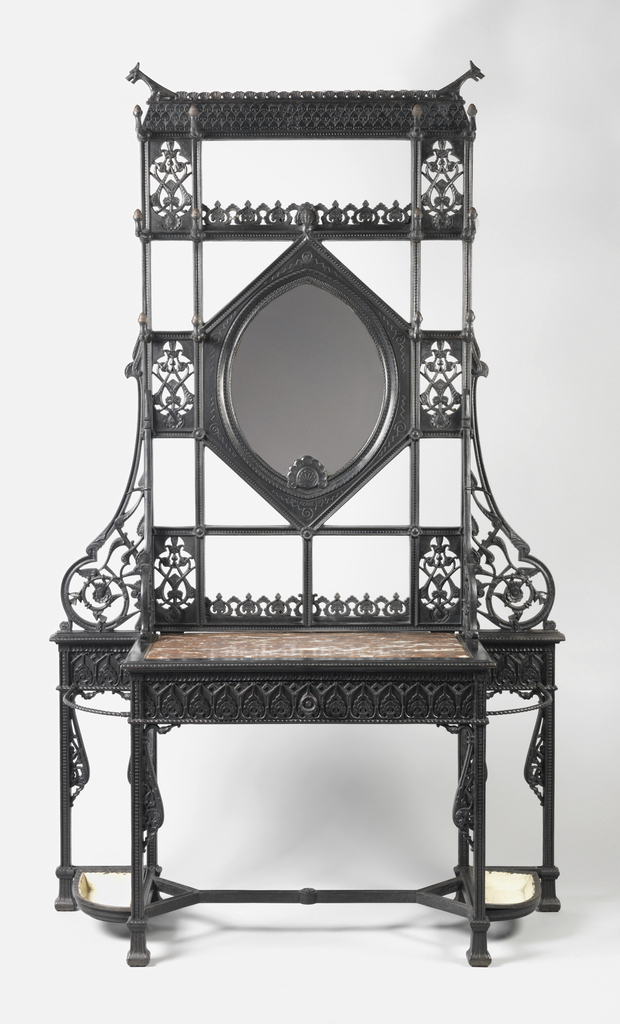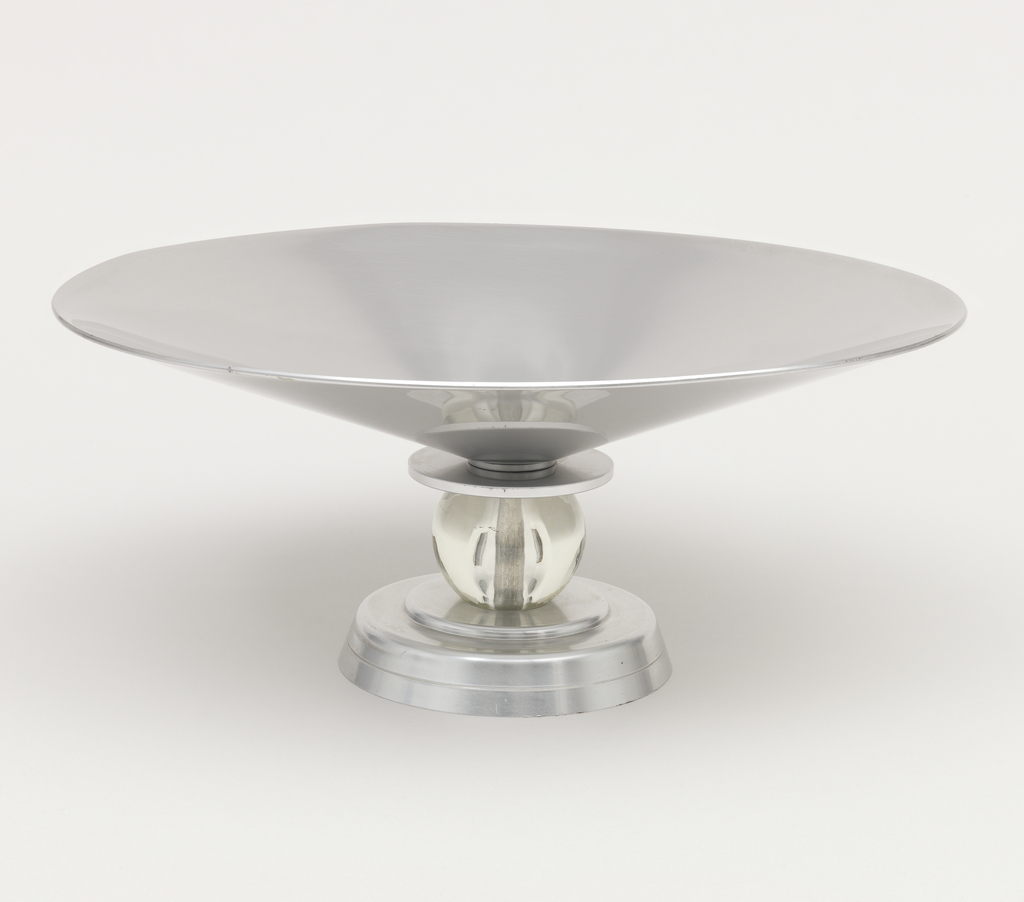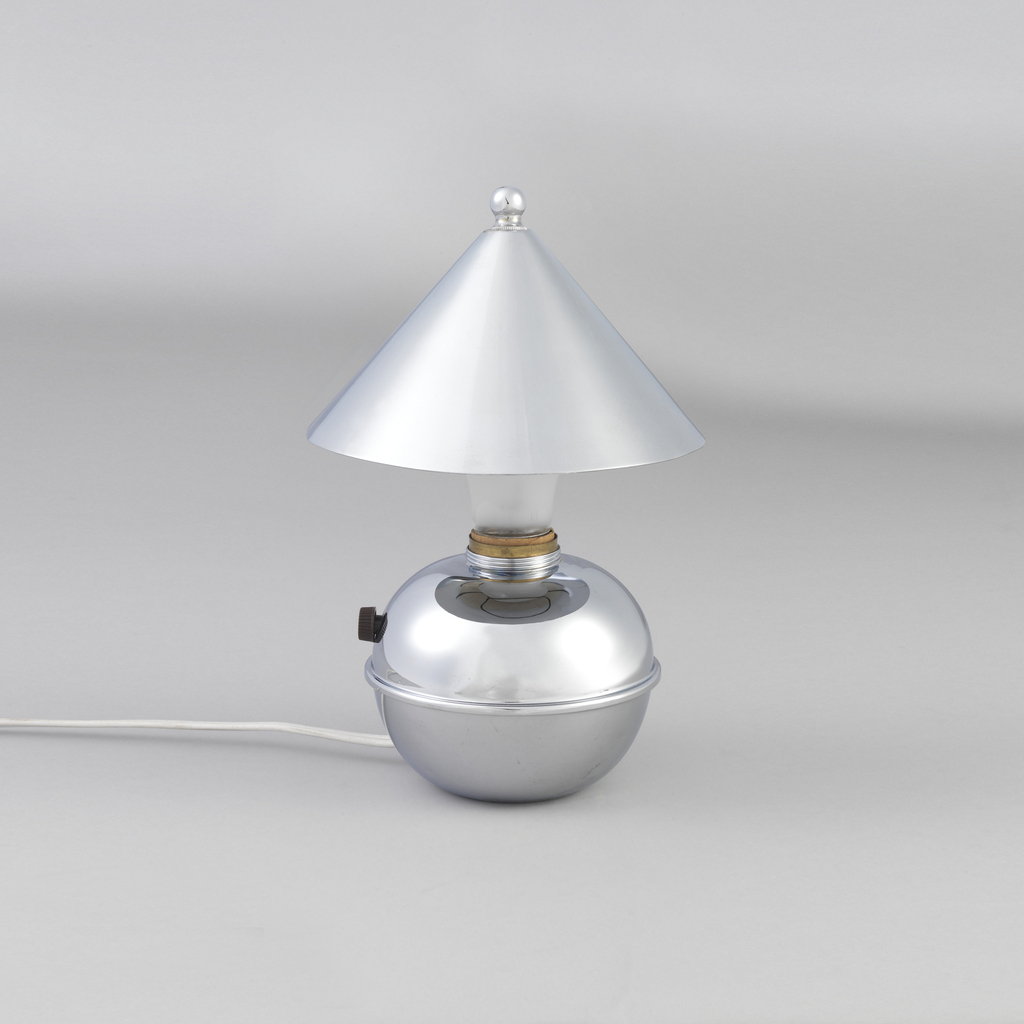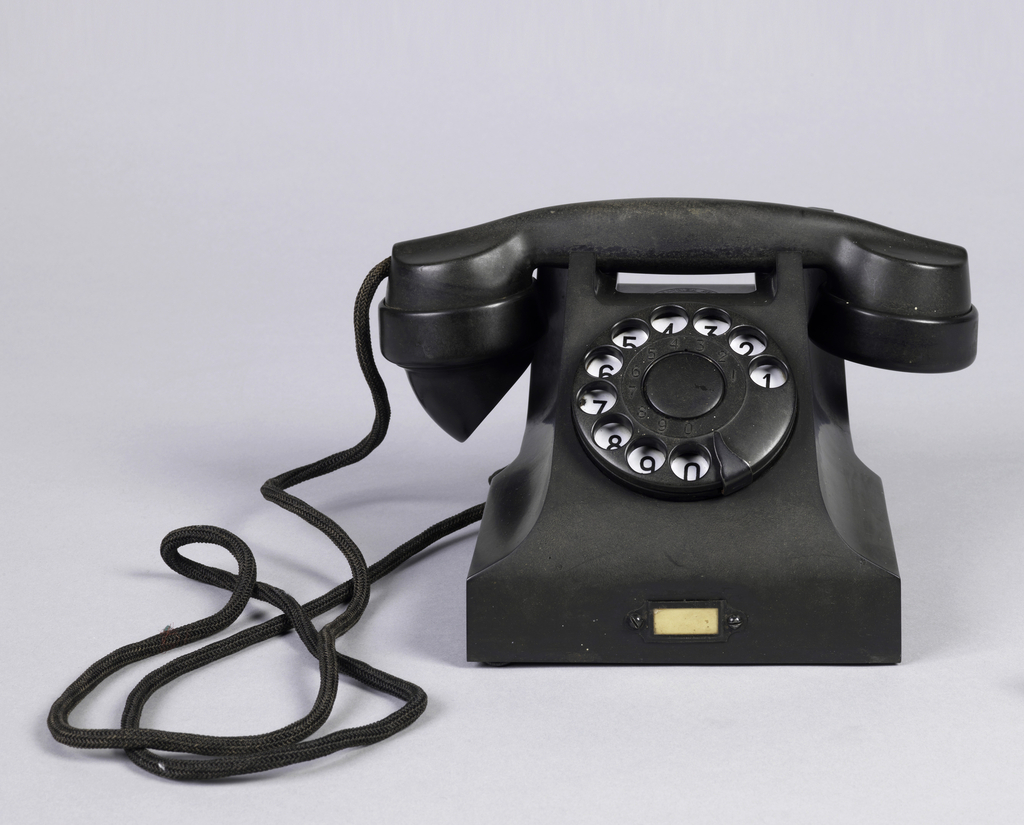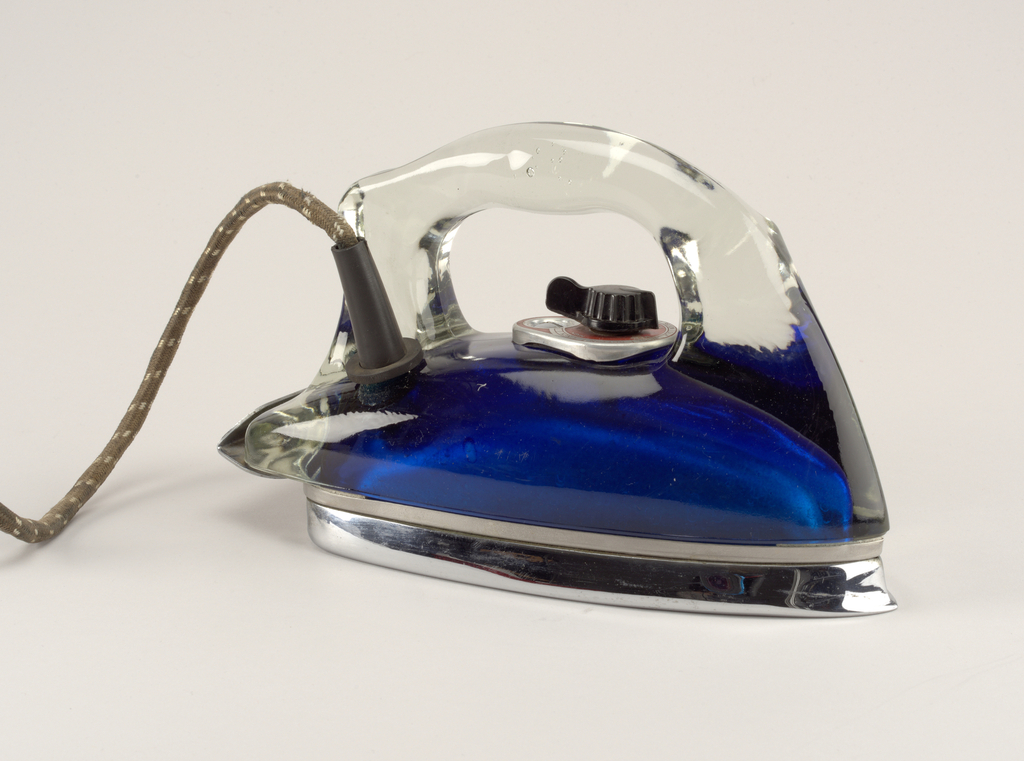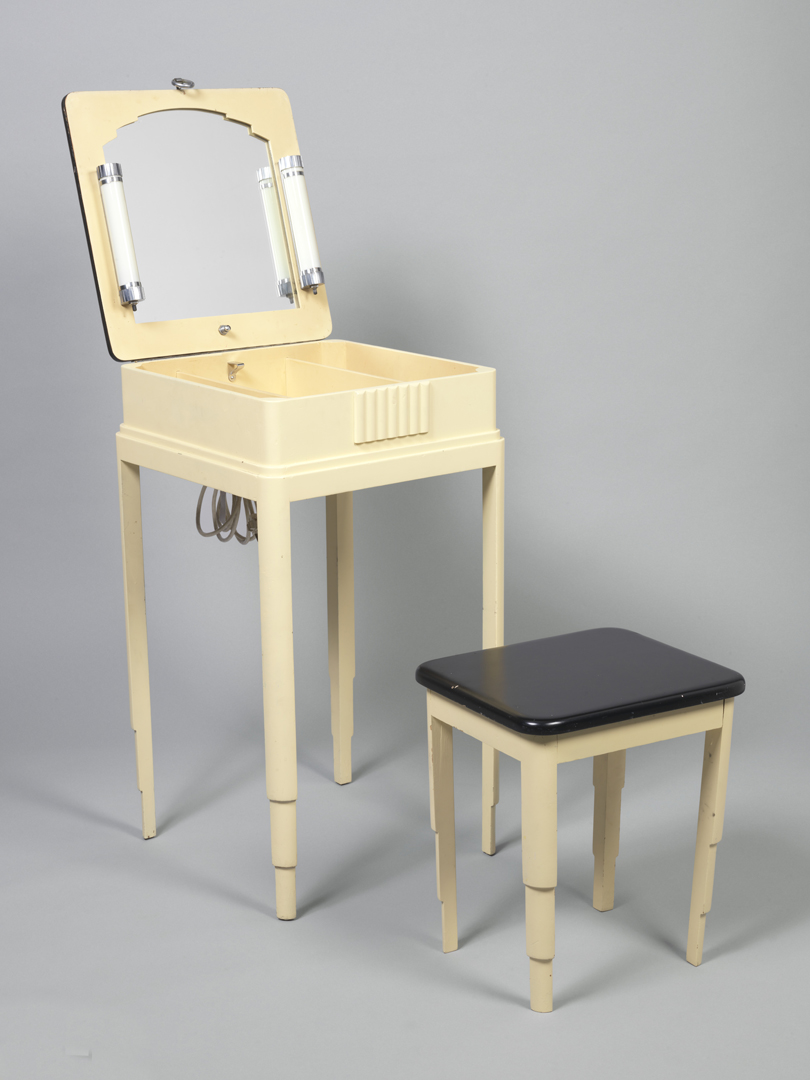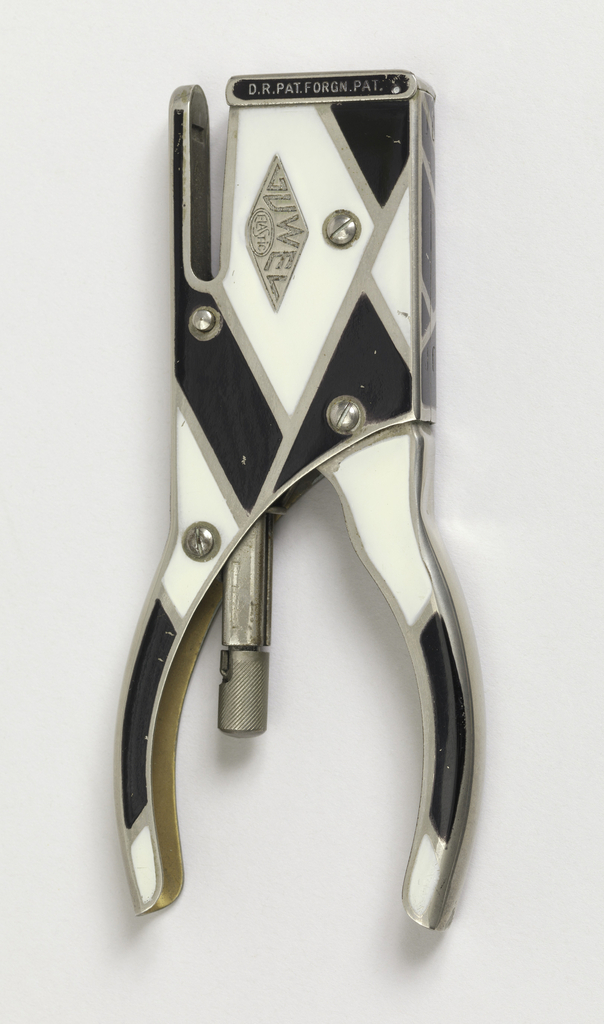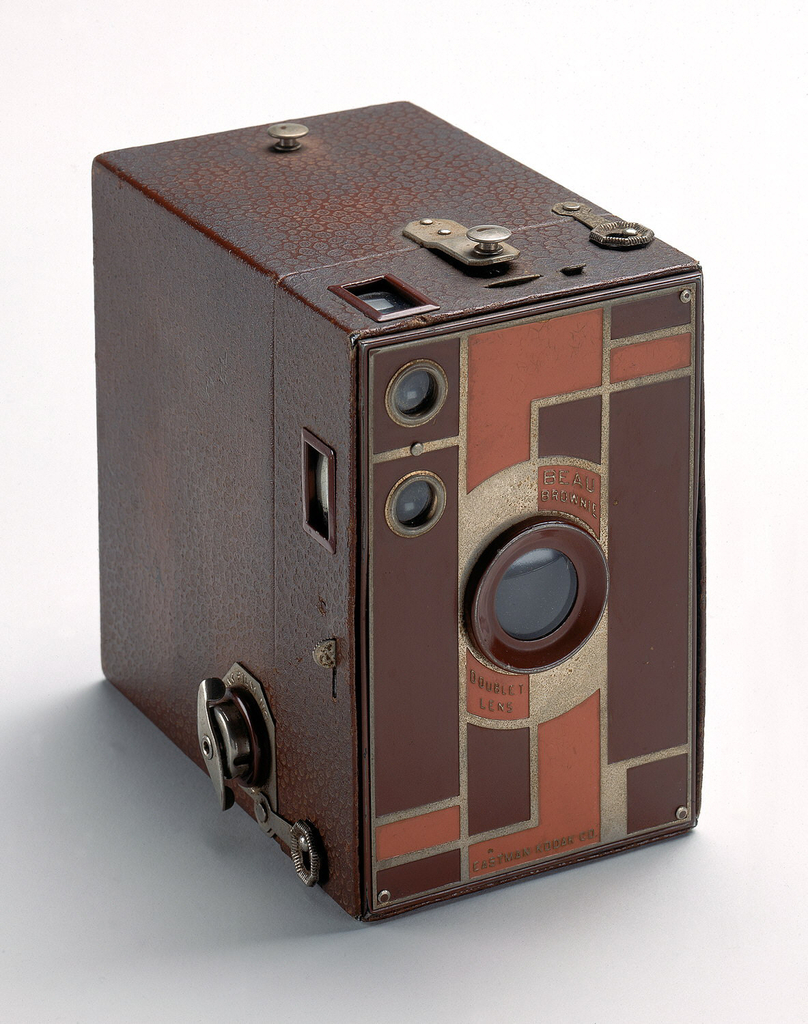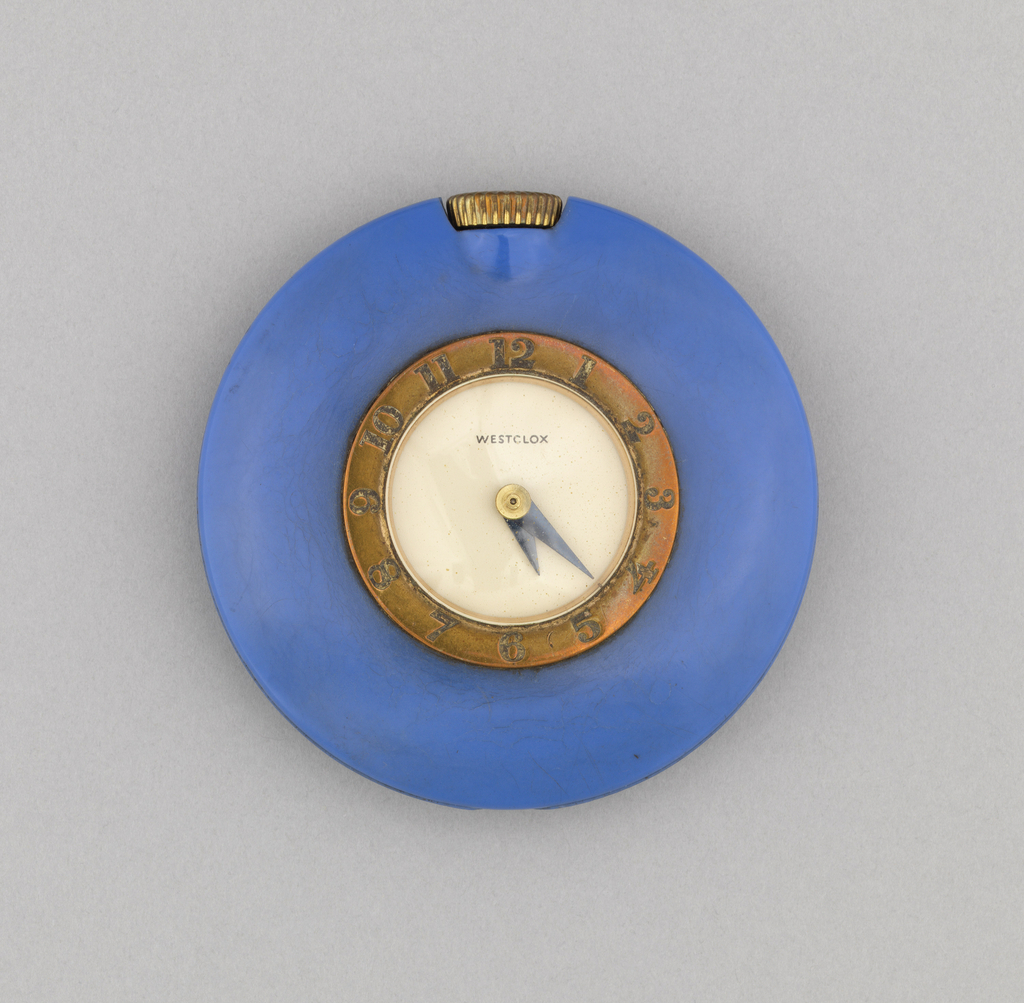The phantasmal world of Dr. Christopher Dresser’s ornamentation delights both the eye and the imagination. Dating from 1875, this iron hallstand features all the quintessential elements of Dr. Dresser’s highly stylized ornament. The “spikey” floral and figural motifs—also recognizable in this illustration for two grotesque dado rails—and his angular interlaced arabesques are frequently used in...
It is no coincidence that many of Lurelle Van Arsdale Guild’s 1930’s designs for aluminum tableware reflect his honed knowledge of traditional forms and ornament. Before becoming one of America’s top industrial designers of the early to mid-twentieth century, Guild was an antique furniture dealer and throughout his entire life, a collector and connoisseur of...
Ruth Gerth’s 1931 “Glow Lamp” for Chase Brass and Copper Company is a gleaming example of American modernism with a bit of a dirty secret. The conical shade is topped by a globular finial and clips on to an incandescent bulb, nestled into its fitting atop a spherical base with a horizontal band running around...
Informally known as the Bakelite telephone, the sculptural Ericsson DBH 1001 was a groundbreaking design that set the standard for the shape of the modern plastic telephone. The telephone was a collaborative project between the Electrisk Bureau of Oslo, Norway and the Swedish firm LM Ericsson and Televerket. In 1930 Ericsson hired engineer Christian Bjerknes...
The postwar design era focused largely on improving all aspects of life at home for those who had maintained it during the war and those who were just returning. The remodeled electric iron was one among many postwar innovations, but this Silver Streak iron in particular epitomizes the design period. The Silver Streak’s aerodynamic form...
Lurelle Guild was a prolific industrial designer, producing useful and beautiful objects that modernized the American home spanning from vacuum cleaners to canapé plates. Guild’s usual method was to invent or develop the new product, patent it, and then assign the patent to the manufacturer, charging a fee and royalties. In 1933 and 1934 he...
The design for this stapler was patented in the United States in 1934 by Fridolin Polzer who was at the time working for E.H. Hotchkiss Company, a leading manufacturer of stapling machines, based in Norwalk, Connecticut. In Japanese, the word for “stapler” is “hotchikisu” after the E.H. Hotchkiss Company, which first shipped staplers to Japan...
A “Beau” is as a man greatly concerned with appearance. And like the word “Dandy” it is often applied to men who affect extreme elegance; who are unduly concerned with looking stylish and fashionable; and who place particular importance on leisurely pastimes. We know F. Scott Fitzgerald’s charming Jay Gatsby as a shining example of...
This handbag watch, introduced in 1933 by the Westclox division of the General Time Instruments Corporation, offered the busy modern woman a portable, fashionable and discreet way to manage her time. [1] An alternative to wearing a wristwatch and about the size of a man’s pocket watch, this timepiece was large enough to be easily found...
